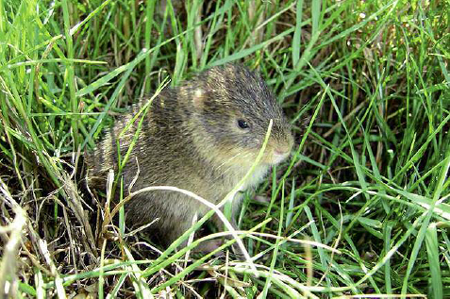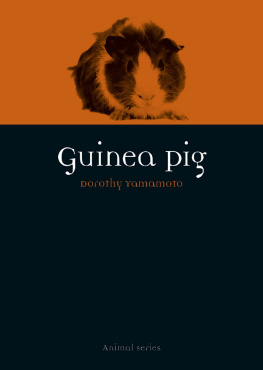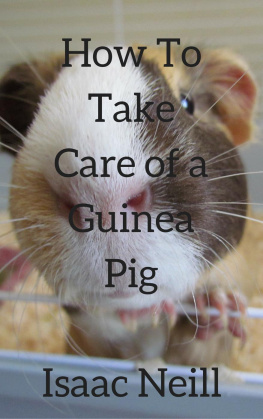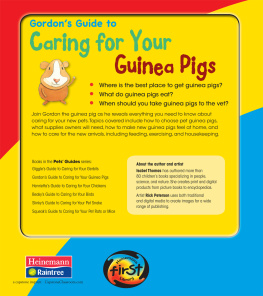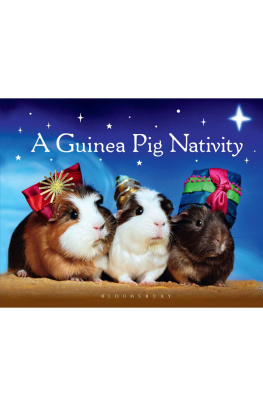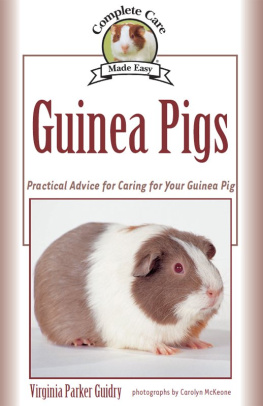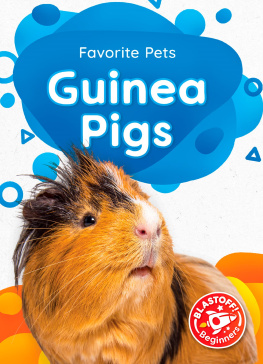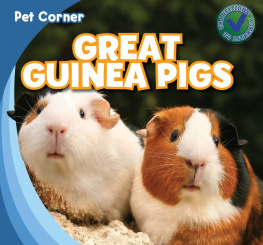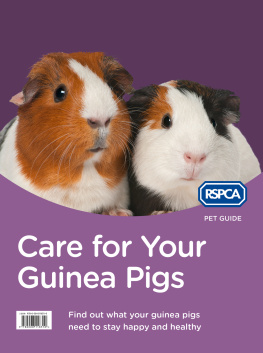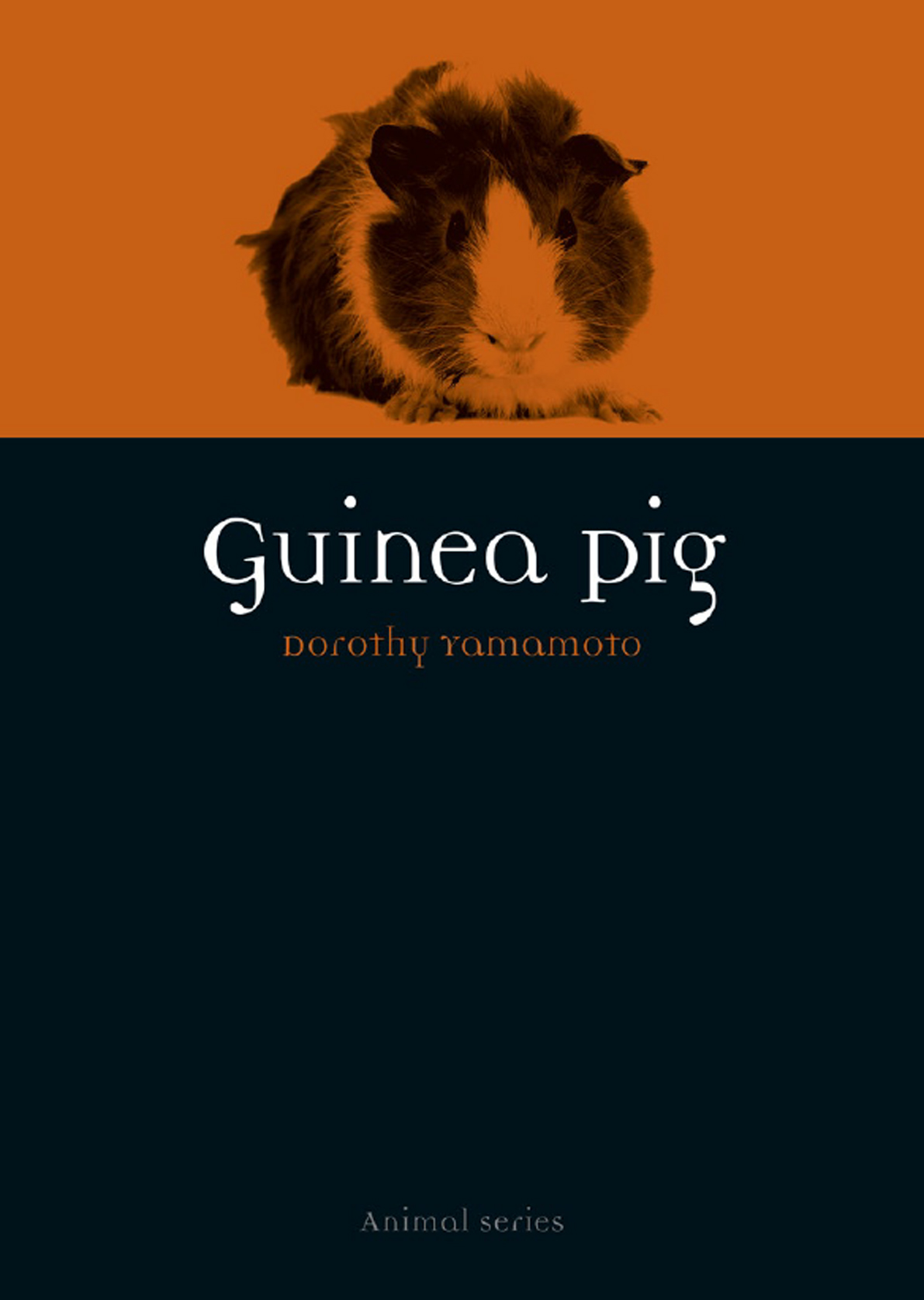Guinea Pig

Animal
Series editor: Jonathan Burt
Already published
Albatross Graham Barwell Ant Charlotte Sleigh Ape John Sorenson Badger Daniel Heath Justice
Bear Robert E. Bieder Bee Claire Preston Beaver Rachel Poliquin Bison Desmond Morris
Camel Robert Irwin Cat Katharine M. Rogers Chicken Annie Potts Cockroach Marion Copeland
Cow Hannah Velten Crocodile Dan Wylie Crow Boria Sax Deer John Fletcher Dog Susan McHugh
Dolphin Alan Rauch Donkey Jill Bough Duck Victoria de Rijke Eagle Janine Rogers
Eel Richard Schweid Elephant Dan Wylie Falcon Helen Macdonald Flamingo Caitlin R. Kight
Fly Steven Connor Fox Martin Wallen Frog Charlotte Sleigh Giraffe Edgar Williams
Goat Joy Hinson Gorilla Ted Gott and Kathryn Weir Guinea Pig Dorothy Yamamoto
Hare Simon Carnell Hedgehog Hugh Warwick Horse Elaine Walker Hyena Mikita Brottman
Kangaroo John Simons Leech Robert G. W. Kirk and Neil Pemberton Leopard Desmond Morris
Lion Deirdre Jackson Lobster Richard J. King Monkey Desmond Morris Moose Kevin Jackson
Mosquito Richard Jones Mouse Georgie Carroll Octopus Richard Schweid Ostrich Edgar Williams
Otter Daniel Allen Owl Desmond Morris Oyster Rebecca Stott Parrot Paul Carter
Peacock Christine E. Jackson Penguin Stephen Martin Pig Brett Mizelle Pigeon Barbara Allen
Rabbit Victoria Dickenson Rat Jonathan Burt Rhinoceros Kelly Enright Salmon Peter Coates
Shark Dean Crawford Snail Peter Williams Snake Drake Stutesman Sparrow Kim Todd
Spider Katarzyna and Sergiusz Michalski Swan Peter Young Tiger Susie Green Tortoise Peter Young
Trout James Owen Vulture Thom van Dooren Walrus John Miller and Louise Miller Whale Joe Roman
Wolf Garry Marvin
Guinea Pig
Dorothy Yamamoto
REAKTION BOOKS 
Published by
REAKTION BOOKS LTD
33 Great Sutton Street
London EC1V 0DX, UK
www.reaktionbooks.co.uk
First published 2015
Copyright Dorothy Yamamoto 2015
All rights reserved
No part of this publication may be reproduced, stored in a retrieval system or transmitted, in any form or by any means, electronic, mechanical, photocopying, recording or otherwise, without the prior permission of the publishers
Page references in the Photo Acknowledgements and
Index match the printed edition of this book.
Printed and bound in China by C&C Offset Printing Co. Ltd
A catalogue record for this book is available from the British Library
eISBN: 9781780234670
Contents
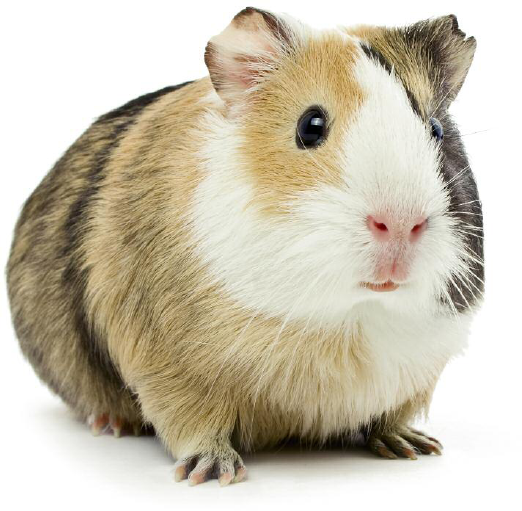
Whats in a Name?
I met literary guinea pigs before I met real ones. One of the bonuses of being ill as a child was that my mother would invariably sit on my bed and read me Pigs is Pigs by the American writer Ellis Parker Butler. In this comic short story, Mike Flannery, agent of the Interurban Express Company, becomes embroiled in a dispute with an irascible customer, Mr Morehouse, over the rate to be charged for transporting a pair of guinea pigs. Mr Morehouse argues he should pay 25 cents as they are pets, but Flannery sticks to his rule book and demands 30 cents. Pigs is pigs, he declared firmly. Guinea-pigs, or dago pigs or Irish pigs is all the same to the Interurban Express Company an to Mike Flannery. Th nationality of the pig creates no differentiality in the rate, Misther Morehouse! The row simmers on, involving endless missives from Head Office, and eventually the deal-breaking intervention of a scholarly professor. Meanwhile the guinea pigs, eatin loike ragin hippypottymusses, have increased in number to several thousand, and the tale ends with Flannery, who has been instructed to return the shipment, shovelling them by the dozen into bushel baskets with a coal scoop.
Despite being treated as commodities, the guinea pigs in Pigs is Pigs succeed in taking over the story, and in completely flummoxing the human characters. At the same time, they remain ambiguous little presences, escaping the net of regulations that is supposed to contain them. Guinea pigs may lack the glamour of wolves or tigers or the mythic resonance of snakes, swans or foxes, but as key participants in numerous human enterprises from farming and medicine to space travel and the pet industry they have quietly run alongside us for much of our history, and in doing so have raised important questions about how we characterize, and exploit, the animal world. This book places them centre stage.
Guinea pigs are rodents of the family Caviidae, subfamily Caviinae, genus Cavia. The familiar small family pets belong to a distinct species, C. porcellus, which (apart from a few feral escapees) does not exist in the wild. Flannerys predicament has been exaggerated for effect: guinea pigs are not nearly as prolific as rabbits, rats or mice, since their relatively long gestation period 63 to 75 days, about twice the length of a rabbit pregnancy limits the number of litters that can be born in a year. (However, they reach sexual maturity earlier than other rodents: females can become pregnant when they are about four weeks old, compared to six weeks for mice and thirteen weeks for rabbits.) The babies emerge fully formed, like miniature adults, and can quickly run about and forage for themselves. This is in keeping with the lifestyle of related wild species, which do not create permanent homes for themselves but rely on nimbleness and anticipation to avoid becoming prey.
A precocial baby guinea pig (about 8 hours old). | 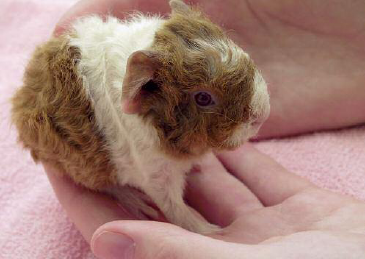
|
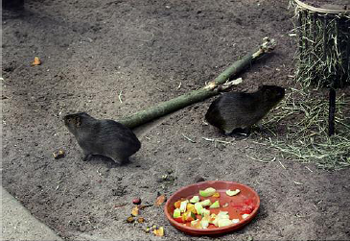
| Greater guinea pigs, C. magna, in Helsinki Zoo. |
The guinea pigs close relatives include C. aperea, C. fulgida and C. tschudii, native to the Andean region of South America (presentday Ecuador, Peru, Bolivia, and the southern part of Colombia). C. magna, or the greater guinea pig, is found in Brazil and Uruguay. About 8,000 years ago, rising sea levels isolated the tiny island of Moleques do Sul, off the Brazilian coast, and with it a population of C. magna, which evolved into C. intermedia, or Santa Catarinas guinea pig, now one of the most critically endangered species on the planet and numbering fewer than 60 individuals in 2012.
Cavia porcellus developed into a distinct species because of selective breeding by the Andean peoples, a history which is discussed more fully in
